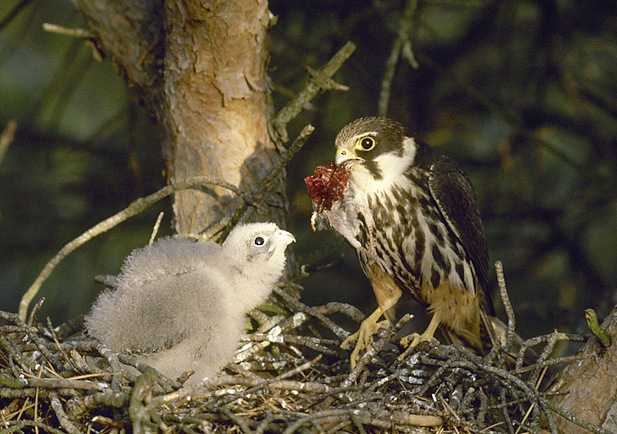SEO/BirdLife will keep track of black kites, black-headed sandgrouse, and hobby geese with GPS devices in 2022 to learn their migratory routes
- Studying the migratory movements of these species will allow us to analyze how climate change is affecting these birds and the need to conserve their breeding and wintering sites.
- The three species are this year’s priority target of the Migra program that SEO/BirdLife has been developing together with Fundación Iberdrola España for more than ten years.
At a time of global crisis like the present, birds allow us to know the health state of the planet. Knowing their migratory routes and their wintering grounds provides valuable information about what is happening. The climate emergency and the loss of biodiversity are a reality that must be addressed with the data obtained through the Migra Program.
SEO/BirdLife has as a priority objective this year 2022 to mark with a tracking device (GPS) several specimens of Black-bellied Sandgrouse, a species closely linked to agricultural environments, to learn more about their movements and the problems they have in their breeding and wintering areas, study how they use the land, etcetera, especially how they can affect the biology of the species the thousands of hectares of their habitat that will be occupied with new renewable energy plants.
In addition, several black kites will be marked, as this is a species in which there is much to discover and advance to know their wintering sites in Africa and how they use the different environments in that continent and their threats. A marking that began in 2021 and will continue in 2022 to learn more about their biology and how the change affects their behavior, as changes are already being detected concerning what was known so far.
Finally, we will be marking specimens of the Eurasian Hobby, a small-sized bird of prey weighing about 250 grams, and the scarcest of our falcons. In Spain, there are an estimated 2,300-3,000 pairs. It is a trans-Saharan migratory species, and it is known that the wintering areas of the world population are generally in southern Africa. However, the specific wintering areas of the Spanish population are unknown, as well as the migratory route they follow on their journey to Africa, how long they take, whether they do it during the day or at night, etc., but it is expected that they make a spectacular migration of about 10,000 kilometers to reach savannah areas in southern Africa. We will know all the details weekly to the permanent information provided by these new bird tracking systems.
The need to study migratory routes
For more than ten years, SEO/BirdLife and Fundación Iberdrola España have been collaborating in the Migra Program to study the migration and spatial ecology of birds by marking them with remote tracking devices. A total of 1,266 birds of 35 different species have been tagged, with a database of millions of locations, thanks to hundreds of collaborators and Spanish and foreign entities.
This has allowed the creation of a database that, as it is completed, will allow us to know in detail the spatial ecology of birds throughout the year to preserve them in the future and evaluate the effect that global change is having on them since this work records their current migratory behavior and will allow comparisons with their future behaviors, as well as documenting these changes with high quality information.
In addition to climate change, the alteration and disappearance of habitats and the different impacts humans exert on nature are causing birds to modify their migrations. Changes in wintering areas, shortening of migratory routes, the increasingly sedentary lifestyle of species or variations in migratory phenology are some of the changes detected in recent decades in migratory birds, largely due to the tremendously rapid transformation of the territory and climate generated by human activity.
Migra Program
The Migra Program, launched in 2011 by SEO/BirdLife with the collaboration of Fundación Iberdrola España, incorporates the latest technologies in geolocation and remote monitoring systems to know in greater detail the movements of birds inside and outside our country. Thanks to this initiative, it is possible to know the start and end dates of their migrations, the stopping places, and feeding points, the time it takes them to make these trips, if they are repeated in spring and autumn migration, the main wintering and dispersal areas, or if the routes are the same year after year. Fundación Iberdrola España collaborates with this program as part of its activity in support of biodiversity, one of its main areas of action.

